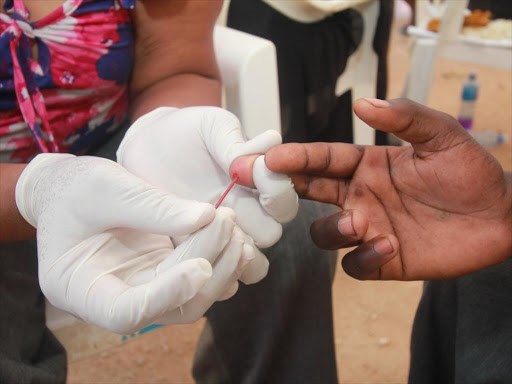
Tuesday June 4, 2024

A person being tested for HIV. You now need three tests with different types of test kits.
Image: FILE
Kenya has taken a commendable step by adopting the World Health Organization's recommendation to transition from a two-test to a three-test HIV diagnosis strategy.
This simply means a person can only be diagnosed with HIV after three consecutive tests that turn positive.
A negative diagnosis will also be given only after three tests.
As a general rule, WHO recommends that a number of tests should be used to achieve an accurate HIV diagnosis, defined as less than one false-positive per 100 people diagnosed with HIV.
Previously, two positive tests were sufficient to diagnose HIV. However, as the number of people with HIV decreases, the likelihood of false positives increases.
The three-test strategy ensures that HIV diagnoses are as accurate as possible, reducing the risk of misdiagnosis and ensuring that individuals receive the appropriate care and treatment promptly.
The consequences of providing an incorrect test result are serious. A false-positive diagnosis leads to unnecessary lifelong antiretroviral therapy and social and emotional consequences for clients and their families.
A false-negative diagnosis means that someone living with HIV will not benefit from ART and could unknowingly transmit HIV to partners and, in the case of pregnant and breastfeeding women, to their infants.
The National Aids and STIs Control Programme will implement the three-test algorithm next month. We hope the fight against HIV will only gain strength, bringing us closer to an Aids-free generation by 2027.
Quote of the Day: “Strive for excellence, not perfection, because we don't live in a perfect world.”
Joyce Meyer
The American Charismatic Christian author and speaker was born on June 4, 1943